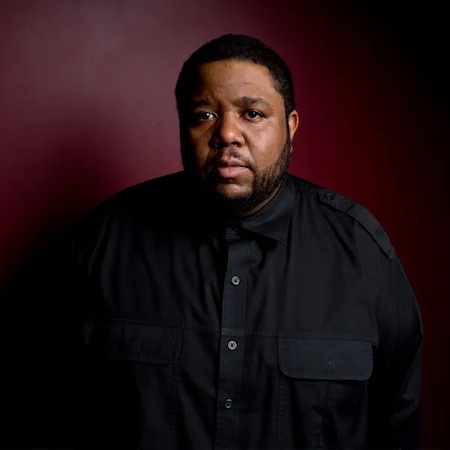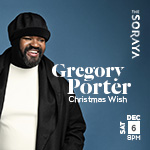Oct 28, 2025 10:47 AM
In Memoriam: Jack DeJohnette, 1942–2025
Jack DeJohnette, a bold and resourceful drummer and NEA Jazz Master who forged a unique vocabulary on the kit over his…

The Irving S. Gilmore Piano Festival commissioned a piece by Tyshawn Sorey that premiered in Kalamazoo, Michigan, this spring.
(Photo: Courtesy Tyshawn Sorey)The in-person interfacing of jazz and classical music was back on display for the first time in four years. With streaming options available, hearty customers and lovers of live music came out in droves to enjoy the Irving S. Gilmore Piano Festival (formally known as the Gilmore Keyboard Festival), an all-indoor rite of spring that southwest Michigan has been enjoying in various locales every other year since the late ’80s. This year’s event took place in Kalamazoo, with 28 local venues getting in on the action.
Things got off to a bumpy start. Headliner Herbie Hancock’s fest-opening appearance was canceled due to COVID among band members. (The concert has been rescheduled for Sept. 23.) In the end, the festival had a jazz bookend worthy of its name with Diana Krall and her quartet performing three weeks later at Miller Auditorium.
Despite the absence of other equally big-name jazz talent, there were mighty fine performances turned in by not just jazz artists but some nice crossover shows as well. NPR Music host, pianist and educator Lara Downes held a lecture/demo entitled “The Long Road Home: A Pianist’s American Journey,” which showcased her rise as a performer, activist and arts advocate with a special focus on the music and stories of Black composers. Other, more off-kilter shows came from Sandbox Percussion with composer Conor Hanick. One was a major highlight was the group’s riveting, stop-the-clocks Gilmore-commissioned performance of a work by Tyshawn Sorey. It was a stunning display of discipline, memory, coordination, use of space and piano as percussion instrument, offering offsetting vibes, gongs and water-glass/tape loop “bells,” all of it synchronized.
Another delightful surprise was theremin artist, pianist and Haken Continuum player Rob Schwimmer’s lively mix of banter, Great American Songbook fodder and movie soundtrack music (e.g., “Moon River” into “Goldfinger”), some avant garde and classical. Highlight: his natural rendering of John Coltrane’s balladic “After The Rain,” on theremin, no less. Mention also should be made of the festival-wide performances of Lady Day at Emerson’s Bar and Grill, at Farmer’s Alley Theatre, with Alexis J. Roston as Billie Holiday and pianist Abdul Hamid Royal. Laced with a run-through of 20th century American history as personally experienced by a Black African-American woman performer, Roston’s delivery left me wondering: Could her riveting show (perhaps toned-down) ever see the light of day in today’s testy public-school environment?
The jazz bona fides came, with one exception, via the piano trio format, starting with Fred Hersch, bassist Drew Gress and drummer Eric McPherson at the D. Terry Williams Theatre on the campus of Western Michigan University. Hersch simmered as he dwelled on Thelonious Monk’s “’Round Midnight” melody, teasing out its beauty, along with an equally dreamy “Moon And Sand,” the keyboard seemingly weightless, bass and drums joining as one. A typically quirky “Blue Monk” led to a delicate solo-piano encore of“The Nearness Of You” that left this full house sighing. One of a handful of jazz shows at Bell’s Eccentric Cafe, Emmet Cohen’s trio set offered funkiness and choppy starts and stops to standards such as “Surrey With The Fringe On Top” and “Cherokee.” They looked rad, but played it right down the middle.
Other standout performances included Sullivan Fortner’s early afternoon trio set at the Civic, where the music of Monk (“Evidence”), Bud Powell and Bobby Hutcherson (“Little B’s Poem”) shared space with generous Ahmad Jamal-type grooves, reaching deep with a dreamy “The Peacocks” and an equally slow and upending “I’m A Fool To Want You,” offset with some lively, Bobby McFerrin-style crowd engagement. Other Civic noontime shows included local faves Tri-Fi, with pianist Matthew Fries, drummer Keith Hall and bassist Phil Palombi (in from New York). With Palombi serving as anchor, and Fries keeping up with the very active Hall, there were uptempo jaunts (“Cross Country”), straightahead swing, a hats-off tribute of Palombi’s with the gently swinging “LaFaro,” it all ending with the peppy, busy “Grace” shifting between 3/4 and 4/4 as if the song, like the song’s namesake, couldn’t make up its mind.
That exception to the jazz trio was delivered by pianist Donal Fox, also at the Civic. A true melding of jazz and classical technique, Fox’s bluesy, meditative and virtuosic style found its best expression with Duke Ellington’s ruminative “Reflections In D,” ending with a pulse. In a lunch-crowd setting, suddenly there were two encores, where there had been none. Dan Tepfer’s trio was impressive in its contrasting program of all arranged music. Bypassing the mix of variable songs, his trio with bassist Shawn Conley and drummer Jochen Rueckert performed a suite based on Stravinsky’s Pulcinella, written in 1920 as a neoclassical ballet. Indeed, jazz met classical in its most complete form here. Rueckert’s use of mallets, sticks and brushes were a standout. DB

Jack DeJohnette boasted a musical resume that was as long as it was fearsome.
Oct 28, 2025 10:47 AM
Jack DeJohnette, a bold and resourceful drummer and NEA Jazz Master who forged a unique vocabulary on the kit over his…

D’Angelo achieved commercial and critical success experimenting with a fusion of jazz, funk, soul, R&B and hip-hop.
Oct 14, 2025 1:47 PM
D’Angelo, a Grammy-winning R&B and neo-soul singer, guitarist and pianist who exerted a profound influence on 21st…

Jim McNeely’s singular body of work had a profound and lasting influence on many of today’s top jazz composers in the U.S. and in Europe.
Oct 7, 2025 3:40 PM
Pianist Jim McNeely, one of the most distinguished large ensemble jazz composers of his generation, died Sept. 26 at…

To see the complete list of nominations for the 2026 Grammy Awards, go to grammy.com.
Nov 11, 2025 12:35 PM
The nominations for the 2026 Grammy Awards are in, with plenty to smile about for the worlds of jazz, blues and beyond.…

Drummond was cherished by generations of mainstream jazz listeners and bandleaders for his authoritative tonal presence, a defining quality of his style most apparent when he played his instrument unamplified.
Nov 4, 2025 11:39 AM
Ray Drummond, a first-call bassist who appeared on hundreds of albums as a sideman for some of the top names in jazz…






